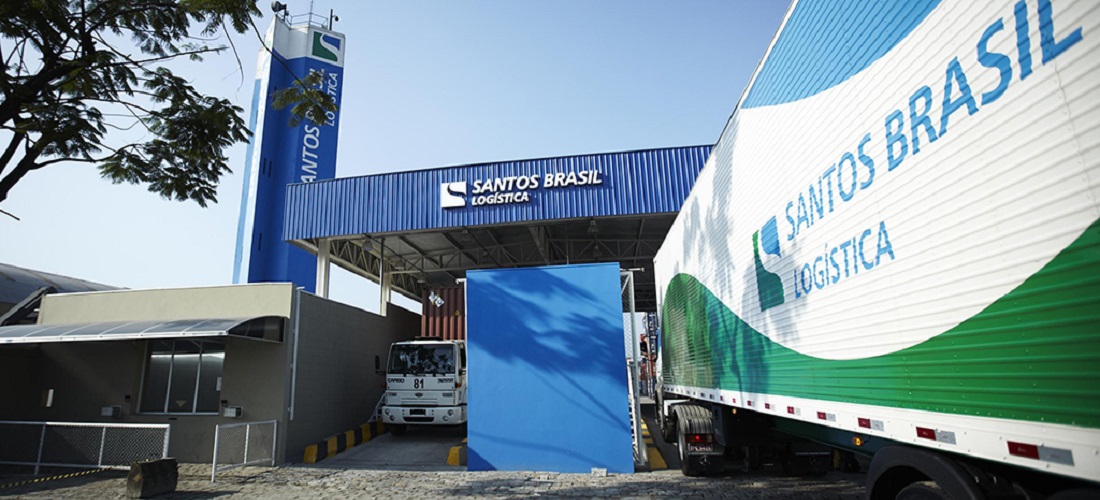
Port of Santos: Operators Swap 120-Step Climb for Remote Crane Control
Jan, 06, 2025 Posted by Denise VileraWeek 202502
The 120 steps are slippery due to the fine rain, and the fog makes climbing 30 meters to a cramped, dirty, and solitary cabin seem like a bad idea. “On days like this, it’s clear how much things have improved,” says Érica Pereira Matias, 40, reflecting on a major change in her career at the Port of Santos.
For 16 years, Érica made this climb almost every day for six-hour shifts. Perched in the cabin, she’d sit with her legs apart to peer down at the trucks below, aligning containers with two white paint marks that showed where the trailer should stop. Using a controller similar to a video game joystick, she maneuvered the RTG (Rubber-Tyred Gantry Crane), loading and unloading containers with precision. “There’s a time for loading and unloading. So, it can’t be slow, but you can’t make mistakes either. It has to be quick and precise,” she adds.
If nature called during those six hours, she had to notify the operations coordinator, descend all 120 steps, and climb back up afterward.
That’s all in the past. Just as Érica was the first woman in her class to operate an RTG, she became the pioneer operator of one of the eight ARTGs (Automated Rubber-Tyred Gantry Cranes) purchased by Santos Brasil, the company that operates the terminal at the Port of Santos. These ARTGs, unlike their predecessors, are operated remotely from a control room on the ground.
Érica is the only woman among the 12 employees trained to operate the remote cranes. Now, she and her colleagues are tasked with training more than 40 others in this innovative system.
Santos Brasil’s investment in automation is part of a broader R$130 million initiative to decarbonize its operations. Another R$15 million went toward electrifying the yard where the ARTGs operate. Unlike the terminal’s 39 diesel-powered RTGs, the eight new ARTGs are fully electric. The company aims to phase out all diesel cranes by 2031, aiming to achieve net-zero emissions by 2040.
This transition is expected to cut CO2 emissions by 713 tonnes per month—a 97% reduction, according to company estimates.
The ARTG rollout is also part of the terminal’s ongoing expansion and modernization, which has seen R$1.3 billion invested since 2019. By 2026, Santos Brasil plans to increase its handling capacity from 2.4 million TEUs to 3 million.
The following chart uses DataLiner data to provide a general overview of container exports and imports registered at the Port of Santos between January 2021 and November 2024.
Expors and Impors at Port of Santos | Jan 2021 – Nov 2024 | TEUs
Source: DataLiner (click here to request a demo)
The new control room is a stark contrast to the 30-meter-high crane cabins of the past. Operators now have desks equipped with four video monitors, allowing them to oversee multiple ARTGs if necessary. The desks are height-adjustable, so employees can choose to sit or stand while working.
“The ARTG is equipped with sensors that keep it on a virtual track, along with 23 cameras—five of which guide its path,” explains Ricardo Miranda, 55, Santos Brasil’s technology director. “Operators now have a clear view of all four corners of the container, something that wasn’t always possible with the naked eye.”
For operators like Jairson Pinho de Lima, 49, the change is a welcome one. “We can take breaks, grab a coffee, or go to the bathroom without a hassle. It’s a safer, more precise, and much more comfortable way to work,” he says. Jairson, affectionately nicknamed “Jaílson” by his colleagues, traded his dream of becoming a pilot for the reality of operating 30-meter-high cranes—a job he’s done for over a decade.
The move to automation also reflects the company’s commitment to employee training and well-being. Many of the crane operators, like Marcio Pereira da Silva, 42, came from entirely different backgrounds.
“I used to be a truck driver and had no experience with cranes,” Marcio recalls. “Learning to operate an RTG was a big change. Now, I’ll be teaching others how to run the ARTGs. Working on the ground, as part of a team, is so much better than being alone up there in the cabin.”
For Érica, the shift to remote operation represents more than just a technological advancement—it’s a personal milestone. Two years ago, she discovered she was pregnant but continued working in the RTG cabin. When health concerns arose, she was reassigned to a different role.
“With remote operations, I could have kept working in my regular position,” she reflects. “Even when I eventually stop, I’d like to stay involved. I’ve overcome so much fear to get here.”
Before becoming a crane operator, Érica worked as a real estate broker and later earned a degree in veterinary medicine—a testament to her resilience and adaptability.
“I face my fears head-on,” she says. For 16 years, that meant climbing 120 steps every day despite her fear of heights. Now, she looks forward to a future firmly grounded in the control room—and in her own determination.
Source: Folha de S. Paulo
Click here to read the original article: https://www1.folha.uol.com.br/mercado/2025/01/operadores-se-livram-de-120-degraus-e-controlam-guindastes-de-forma-remota-no-porto-de-santos.shtml
-
Datamar EN
Aug, 01, 2019
0
DataLiner: Brazil’s container throughput rises in June
-
Navegação
Nov, 21, 2018
0
Argentina will double wheat exports in ten years
-
Mar, 21, 2025
0
Abiove Forecasts Increased Brazilian Biodiesel Exports in 2025
-
Ports and Terminals
Sep, 20, 2019
0
Log-In manages to lease Vila Velha Terminal for another 25 years



